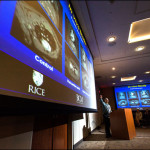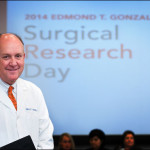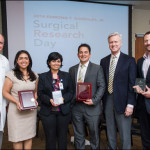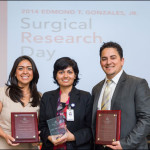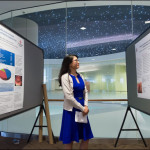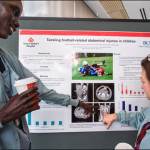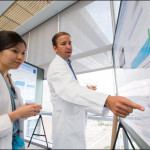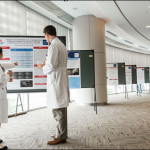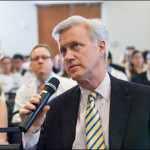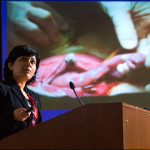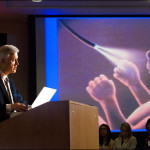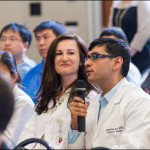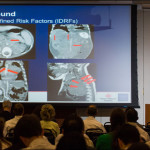
More than 200 physicians, nurses and operating room staff attended the 5th annual Edmond T. Gonzales Jr., Surgical Research Day at Texas Children’s Pavilion for Women on May 9. The event provided a forum for researchers to unveil their work highlighting remarkable advancements in the field of pediatric surgery.
“Surgical research, both basic and clinical, is central to our core values as academic surgeons at Texas Children’s Hospital,” said Charles Fraser, Jr., surgeon-in-chief at Texas Children’s Hospital. “Today’s presentations highlight the exciting and innovative work being done by our surgical colleagues, residents and students.”
The program featured six oral presentations and 86 poster presentations spotlighting the academic efforts of the surgical faculty, post graduate trainees, nursing personnel and operating room staff. Each year, physicians are asked to submit abstracts of their research to be considered for oral presentations for Surgical Research Day and a leadership committee makes the final selection.
This year’s keynote speaker, Dr. N. Scott Adzick, presented “Prospects for Fetal Surgery.” Dr. Adzick is the C. Everett Koop profession of pediatric surgery and surgeon-in-chief at The Children’s Hospital of Philadelphia.
Lynn Sessions, J.D., a health care privacy lawyer at BakerHostetler in Houston, delivered the ethics presentation, “Mobile Technology in Health Care: Convenience or High Risk.”
The annual event wrapped up with a special awards recognition ceremony. Here are this year’s winners:
Best Oral Presentation
Dr. Fariha Sheikh, Pediatric Surgery
“Anesthesia-Induced Neurotoxicity in the Mid-Gestation Fetal Sheep”
Best Poster
Dr. Scott Rosenfeld, Orthopaedics
“Evaluation of Talo-calcaneal Coalitions Using 3D Printed Models”
Samuel Stal Research Award
Dr. Irving Zamora, third year clinical research fellow, Pediatric Surgery
Dr. Yesenia Rojas, third year basic science research fellow, Pediatric Surgery
Click here to access all presentation slides (This link will only open internally)
Surgical Research Day Photo Gallery



